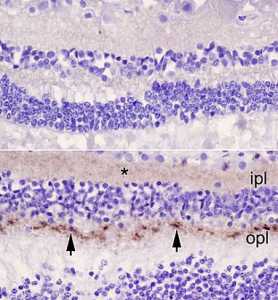Combination of Two Coffee Components Could Slow Parkinson’s Brain Degeneration
Our findings suggest a potential therapeutic option to slow down or stop the progression of Parkinson's disease and Dementia with...
Our findings suggest a potential therapeutic option to slow down or stop the progression of Parkinson's disease and Dementia with...
MedicalResearch.com Interview with: Dr. Moore Dr. Ainsley Moore MD, CFPC, MSc(HB), MSc(CLinEpi) CandAssociate Professor,McMaster UniversityAssociate Editor,Canadian Medical Education JournalVice-Chair, Canadian Task Force on...
MedicalResearch.com Interview with:

Kirti Magudia, MD, PhD
Diagnostic RadiologyResident, Brigham and Women’s Hospital
Clinical Fellow, Radiology, Harvard University
Debra F. Weinstein, M.D.
Vice President, Graduate Medical Education, Partners Health Care
Associate Professor of Medicine, Harvard Medical School
Christina Mangurian, MD,MAS
Professor and Vice Chair at the UCSF Department of Psychiatry
Weill Institute for Neurosciences
Core Faculty, UCSF Center for Vulnerable Populations
Affiliate Faculty, UCSFPhilip R. Lee Institute for Health Policy Studies
Reshma Jagsi, MD, DPhil
Professor and DeputyChair, Department of Radiation Oncology
Director, Center for Bioethics and Social Sciences in Medicine
University of Michigan
MedicalResearch.com: What is the background for this study?
What are the main findings?
Response: Training lengths for medical specialties are increasing and many people are starting training later. Hence, many more trainees are having children during training, an especially difficult time due to long and inflexible work hours. Given the match system, trainees may not have complete control over where they end up in training and thus may not have an optimal support system nearby. Many of the top training institutions are also in high cost of living areas. Since trainees are essentially temporary employees, changing policies to their benefit is challenging. For all of these reasons, prospective and current trainee parents are especially vulnerable.
Parental leave is important to both male and female trainees. We found that just over half of the 15 top graduate medical education (GME) sponsoring institutions associated with the top 12 medical schools did not have parental leave policies. Without these policies, trainees are at the mercy of their departments and program directors. Those institutions that do have parental leave policies for trainees offer significantly less leave to trainees than to faculty. Even then, trainees may not be encouraged to take leave afforded by policy as, depending on specialty board regulations, the leave may extend training time.
(more…)MedicalResearch.comInterview with:

Jac Dinnes PhD, MSc, MA, PGDip
Senior Researcher
Test Evaluation Research Group
Institute of Applied Health Research
University of Birmingham
MedicalResearch.com: What is thebackground for this study? Would you briefly explain the benefits of dermoscopy?
Response: This systematic review was one of a series of Cochrane Reviews of studies evaluating different tests for diagnosing skin cancer. Within creasing rates of skin cancer and an increasing number of more specialised tests becoming available in both primary care and in specialist settings, a thorough review of all available evidence was timely.
The diagnosis of melanoma and other skin cancers fundamentally relies on clinical examination, including history taking, and visual inspection of the concerning skin lesion (mole or patch of skin) and surrounding skin (and other lesions). A dermatoscope is a handheld device using visible light (such as from incandescent or LED bulbs), that allows more detailed examination of the skin compared to examination by the naked eye alone.
Knowing the diagnostic accuracy of dermoscopy added to visual inspection alone, across a range of observers and settings, is critical to understanding its contribution for the diagnosis of melanoma and to future understanding of the potential role of the growing number of other high-resolution image analysis techniques.
(more…)MedicalResearch.com Interview with:

Virginia J. Howard,PhD, FAHA, FSCT
Professor of Epidemiology
The University of Alabama at Birmingham
MedicalResearch.com: What is the background for this study?
Response: This study comes from the REasons for Geographic and Racial Differences in Stroke (REGARDS) study, a national cohort study of 30,239 non-Hispanic black and white community-dwelling participants aged 45 years and older who lived in the 48 contiguous US states.
REGARDS was designed to study risk factors for the development of stroke, with a focus on black and white comparisons as well as comparisons across geographic regions of the US.

MedicalResearch.comInterview with:
Lisa M. Lines, PhD, MPH
University ofMassachusetts Medical School
Worcester
RTI International,Waltham, MA
MedicalResearch.com: What is the background for this study? What are the main findings?
Response: The problem of potentially avoidable emergency department (ED) visits has been linked to barriers in access to high-quality, timely primary care. In Massachusetts ,about half of all ED visits were considered potentially avoidable, or primary-care sensitive (PCS), in the mid-2000s. Indeed, improving access to primary care was a prime motive for the state’s – and the nation’s – first universal coverage health insurance program in 2006. Now, the state has the highest coverage rate in the country.
We used Massachusetts All-Payer Claims Data to study characteristics of insured Massachusetts residents associated with primary-care sensitive ED use and compared such use among people under age 65 with public (Medicaid[MassHealth]) versus private insurance. We studied more than 2.2 million individuals in 2011-12; about 40% had public insurance in 2011, and the rest had private insurance. Our PCS ED measure included nonurgent, urgent but primary care treatable, and urgent but potentially avoidable ED visits.
We found that primary-care sensitive ED use was more than 4 times higher among the publicly insured (public insurees: 36.5 PCS ED visits per 100 person-years; private insurees: 9.0). After adjusting for a range of potential confounders, such as the vastly different morbidity burden of the two groups, public insurance in2011 was associated with about 150% more primary-care sensitive ED use. We also found that 70% of people with public insurance had at least 1 primary care visit, compared with 80% of those with private insurance. The public group also had fewer visits to their PCP of record, even though nearly all of them had an officially designated PCP.
(more…)MedicalResearch.com Interview with:

Kenneth H. Kraemer,M.D.
Chief DNA Repair Section
Laboratory of Cancer Biology and Genetics, Center for Cancer Research
National Cancer Institute
MedicalResearch.com: What is the background for this study?
Response: At the National Cancer Institute, we have been examining patients with xeroderma pigmentosum (XP), a rare, recessively inherited, cancer-prone disease for many years. Therefore, with the increasing use of exome sequencing, we decided to see how closely"big data" corresponded with our clinical observations.
(more…)
The current study suggests that even a single bout of exercise(1h) is sufficient to drive an activity profile in the...
MedicalResearch.com Interview with:

Ira Kalfus, M.D.,
Medical Director
RedHill BioPharma
Immunohistochemical staining of H. pylori from a gastric biopsy - Wikipedia image
MedicalResearch.com: What is the background for this announcement? Would you briefly explain the significance of H. pylori infections? What are the potential complications of infection with this bacteria?
Response: Heliobacter pylori is one of the most prevalent human pathogens. H. pylori bacterial infection affects over 50% of the adult population worldwide1 and 30-40% of the U.S. population2, with an estimated 2.5 million patients treated annually in the U.S.3 People infected with H. pylori may suffer from gastritis and have an increased risk of developing ulcers and gastric cancers. In fact, H. pylori is classified as a group I carcinogen by the International Agency for Research on Cancer in part because it is the strongest risk factor for the development of gastric cancer.4
Eradication of H. pylori is becoming more difficult. Current standard-of-care therapies fail in approximately 30-40% of patients, who remain H. pylori positive. This is due to increasing resistance of H. pylori to antibiotics commonly used in standard combination therapies5. Clarithromycin-resistant H. pylori was formally categorized by the World Health Organization as a pathogen for which there is a high priority need to develop new treatments.6
The pervasive nature of H. pylori, the great health risks that it poses and the rapid development of resistance to currently available therapies speak to the great unmet medical need for new treatments that are effective at eradicating H. pylori infections. We set out to develop TALICIA®(RHB-105) as an answer to this growing public health concern with the hopes that it could someday be adopted as a new first-line therapy for all people affected by H. pylori infection.
(more…)
MedicalResearch.comInterview with:
Professor John McGrath
Niels Bohr Professor
National Centre for Register-based Research
Aarhus University
Queensland Brain Institute
University of Queensland
Brisbane AustraliaQueensland Centre for Mental Health Research
The Park Centre for Mental Health Australia
MedicalResearch.com: What is the background for this study?
What are the main findings?
Response: We know that people born in winter and spring have an increased risk of later developing schizophrenia. But, we were not sure why. We know that vitaminD, the sunshine hormone, is more likely to be low in winter and spring, so wedeveloped a way to test for vitamin D in stored neonatal blood sample.
(more…)Accreditation standards may be an effective policy lever to increase diversity in the physician workforce. ...
 Byron Caughey, Ph.D.
Senior Investigator
Chief, TSE/prion Biochemistry Section
Laboratory of Persistent Viral Diseases
NIH/NIAID Rocky Mountain Laboratories
Hamilton, MT 59840 USA
MedicalResearch.com: What is the background for this study? What are the main findings?
Response: Corneal transplants have caused the transmission of Creutzfeldt-Jakob disease (CJD) in at least two cases, and pathological prion protein has been detected in the retinas of the eyes of sporadic CJD cases. To build on these previous indications of prions in eye tissue, we tested the distribution of prions in various components of eyes from 11 sCJD decedents.
We applied a highly sensitive surrogate test for prions (RT-QuIC) that indicated that all of the sCJD cases had prions in multiple parts of their eye, including the cornea and sclera, which is the white outer surface of the eye. Retinas were usually contained the highest levels, in some cases approaching levels in the brain. Some other parts such as the cornea, lens and vitreous had much lower, but detectable, levels.
(more…)
Byron Caughey, Ph.D.
Senior Investigator
Chief, TSE/prion Biochemistry Section
Laboratory of Persistent Viral Diseases
NIH/NIAID Rocky Mountain Laboratories
Hamilton, MT 59840 USA
MedicalResearch.com: What is the background for this study? What are the main findings?
Response: Corneal transplants have caused the transmission of Creutzfeldt-Jakob disease (CJD) in at least two cases, and pathological prion protein has been detected in the retinas of the eyes of sporadic CJD cases. To build on these previous indications of prions in eye tissue, we tested the distribution of prions in various components of eyes from 11 sCJD decedents.
We applied a highly sensitive surrogate test for prions (RT-QuIC) that indicated that all of the sCJD cases had prions in multiple parts of their eye, including the cornea and sclera, which is the white outer surface of the eye. Retinas were usually contained the highest levels, in some cases approaching levels in the brain. Some other parts such as the cornea, lens and vitreous had much lower, but detectable, levels.
(more…) Kimberley Whitehead
Neuroscience, Physiology & Pharmacology
University College London
MedicalResearch.com: What is the background for this study?
Response: Fetuses move a lot! Very similar movement patterns are seen in both pre-term and full-term newborn infants, but their function is unclear. In animals such as rats, spontaneous movement and consequent feedback from the environment during the early developmental period trigger specific patterns of electrical activity in the brain that are necessary for proper brain mapping.
(more…)
Kimberley Whitehead
Neuroscience, Physiology & Pharmacology
University College London
MedicalResearch.com: What is the background for this study?
Response: Fetuses move a lot! Very similar movement patterns are seen in both pre-term and full-term newborn infants, but their function is unclear. In animals such as rats, spontaneous movement and consequent feedback from the environment during the early developmental period trigger specific patterns of electrical activity in the brain that are necessary for proper brain mapping.
(more…)